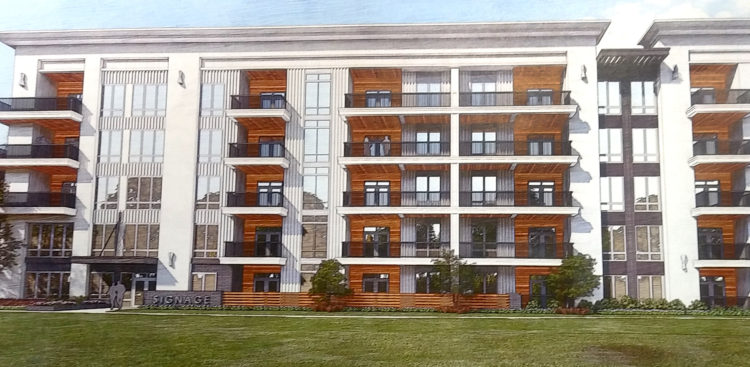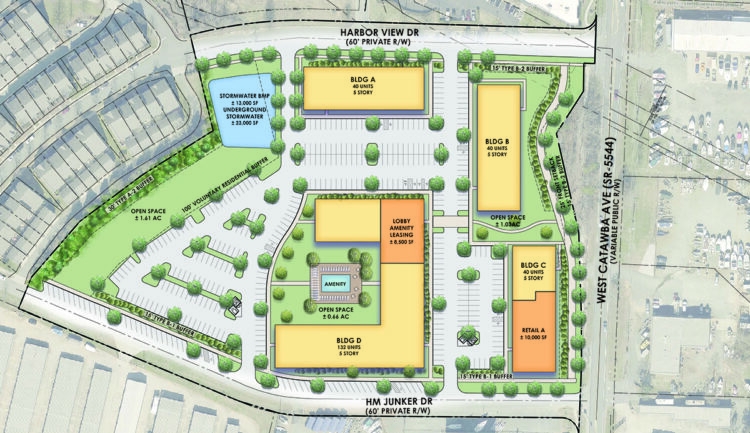
Cameryn Elise is the name of Jake Palillo’s proposed apartment project on West Catawba
June 21. By Dave Yochum. Developer Jake Palillo‘s plan for 252 apartments on West Catawba comes up for a Town Board vote tonight. How the vote will go is anyone’s guess, but members of the business community are starting to speak out in favor of the project that would be just to the east of the Wher-Rena boat showroom.
One prominent Cornelius developer said the vote should go 5-0 in favor of the project because it helps bring more residential to an area where retail is struggling. That’s unlikely, considering the opposition from nearby residents in an election year.

JAKE PALILLO
Tax base
The developer said there’s another benefit for everyone: The taxes on a $50 million project help support the town’s ongoing investment in infrastructure.
“It will be over four years before the first tenant moves in and Catawba widening will be under way,” he said, speaking on the condition of anonymity. “This is a solid project for our town, a no-brainer.”
Town Commissioner Jim Duke said he will vote in favor of the Palillo project tonight based on the “business case” for tax ratables and economic development.
Former mayor gives thumbs up
Former Mayor Gary Knox, a commercial real estate broker, said the “needs and trends for apartment homes have grown in Cornelius.”

GARY KNOX
He said “many established Cornelius residents are trying to figure out how they can downsize and ‘age in place.’ Many apartment home residents will be older and single individuals, who can pay to live anywhere. This is where and how they are choosing to live,” Knox told Cornelius Today.
Apartment leases are much longer now—three years, he said—and with a higher percentage of residents who are renewing their leases vs. moving out or relocating.
With the average new home price in Cornelius over $600,000, there should be a “total community … that espoused sustainability, and fostered all types of opportunities for all people,” the former mayor explained.
Property rights
Knox cited local history and property owner rights in his argument for Palillo’s proposal.
“The adoption of the 1996 Land Development Code was founded upon building that total community, reducing sprawl, reducing the promotion of exclusivity by limiting gated communities and private streets. The Land Development Code provided development patterns that brought new home plans with porches out to sidewalks, cars moved to alleys, whereby people of varying neighborhoods walked and played in new parks and enjoyed open space together,” Knox said.
‘NIMBY’
“Now the ‘not in my backyard’ element has been given new fertile ground to grow via social media, becoming the new vocal minority,” he added.
“And elected officials have lost their historical advocacy for individual property rights, or at least understand them,” Knox said.
Opposition
Real estate theory aside, Palillo’s proposal has caught its share of flack from the neighborhood.
Residents have come out against it for its density, appearance and impact on traffic.
Indeed, the town Planning Board has already recommended that the Town Board deny Palillo’s application.
What may happen
The town’s board of commissioners has the final authority tonight. They may find Palillo’s application inconsistent with the town’s Land Use Plan and simply deny the request—the path specifically recommended by the Planning Board.
Or, they could find the application inconsistent with the Land Use Plan but consistent with the Land Development Code and approve the request with no less than 11 specific conditions required by the town.
The third option is to table the matter for a future meeting.

Junker property rezoning sketch



